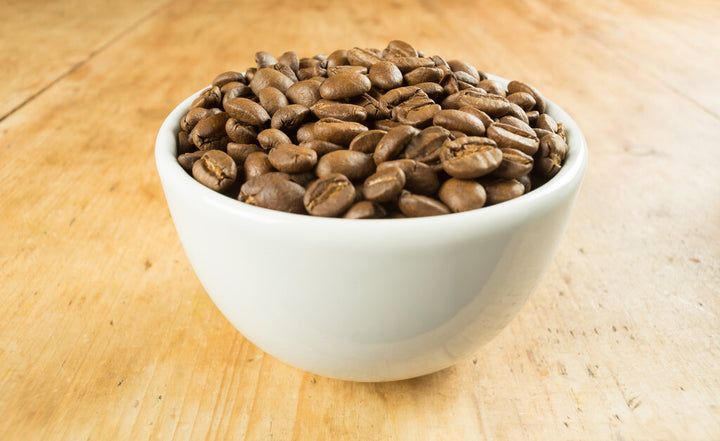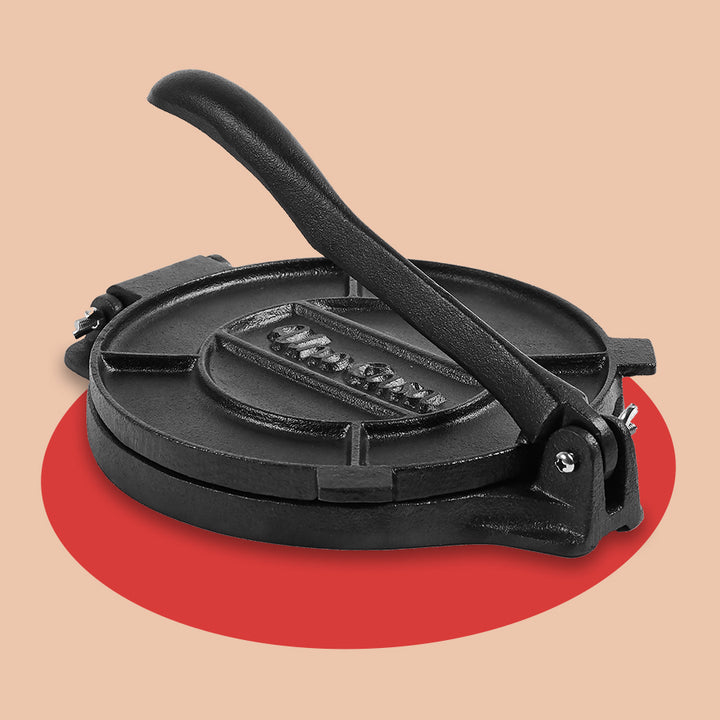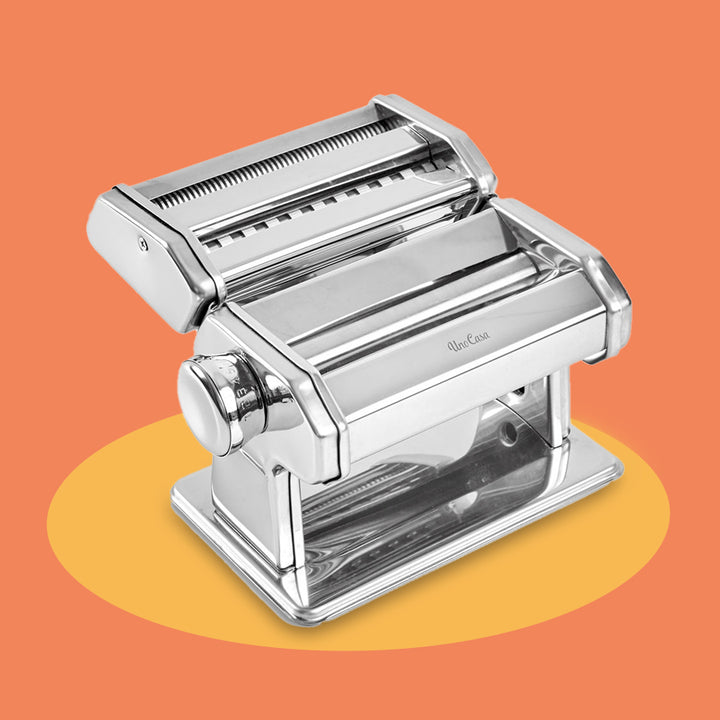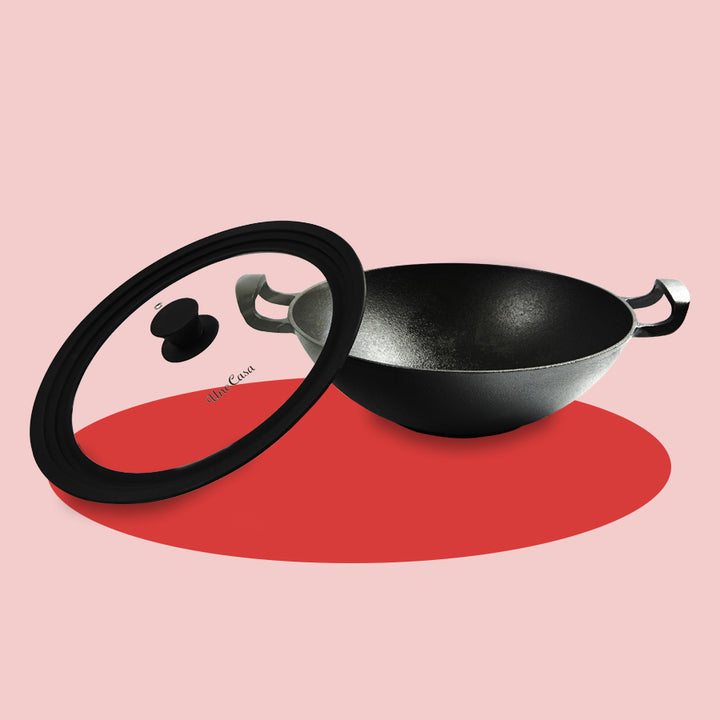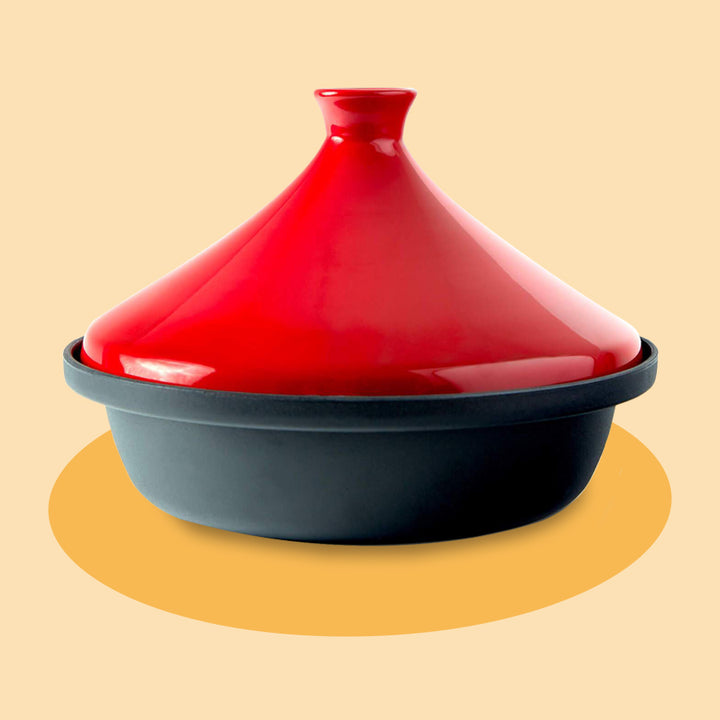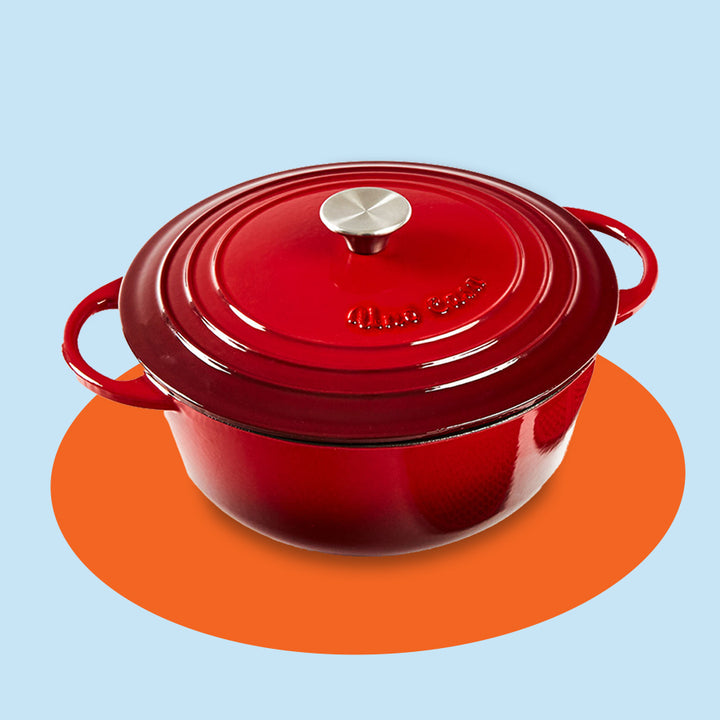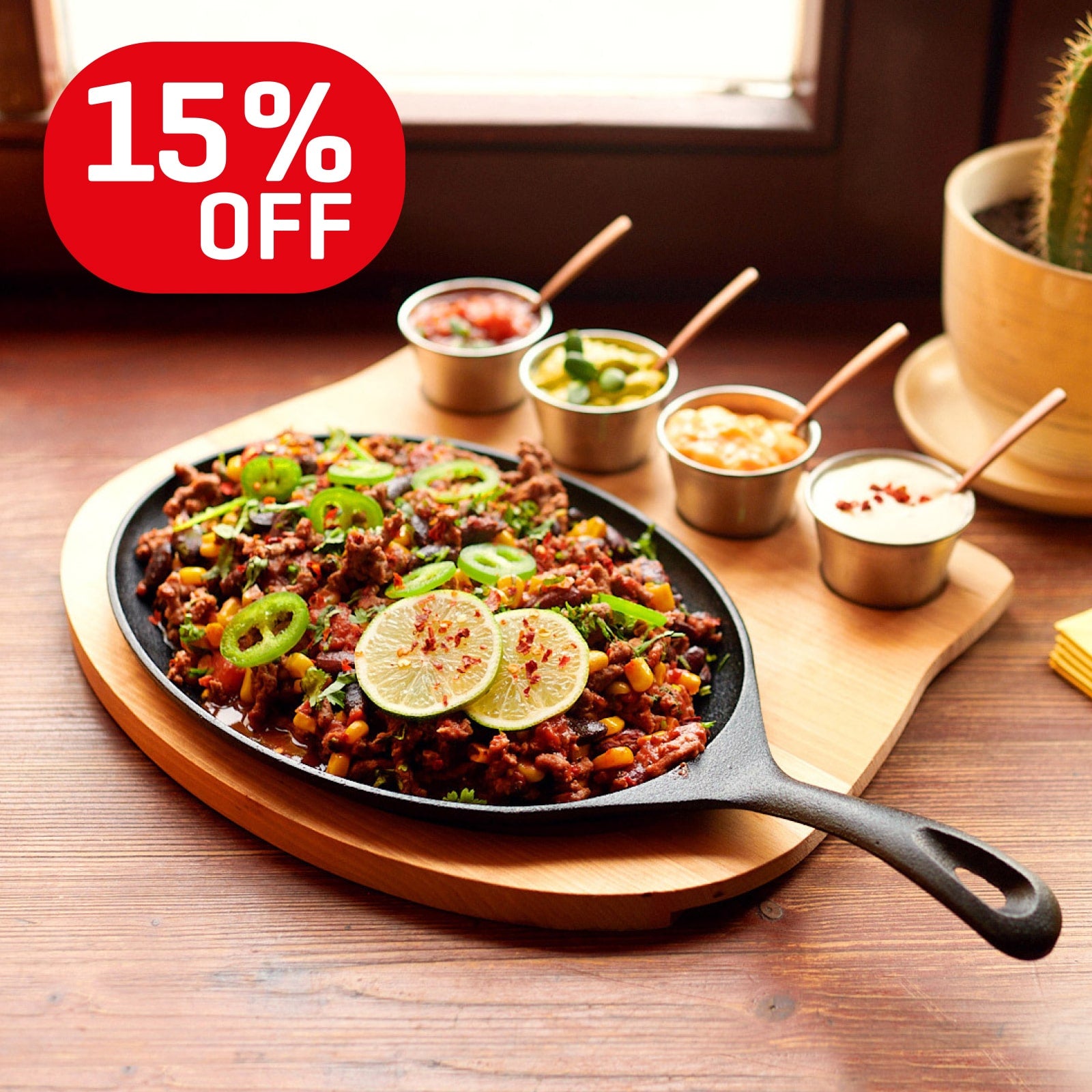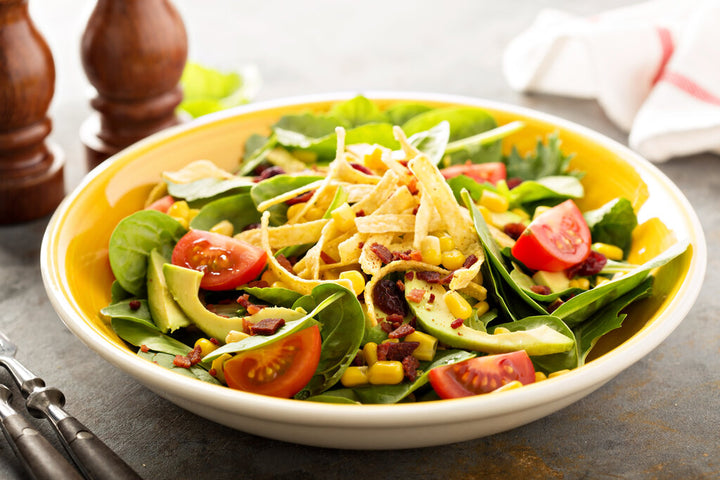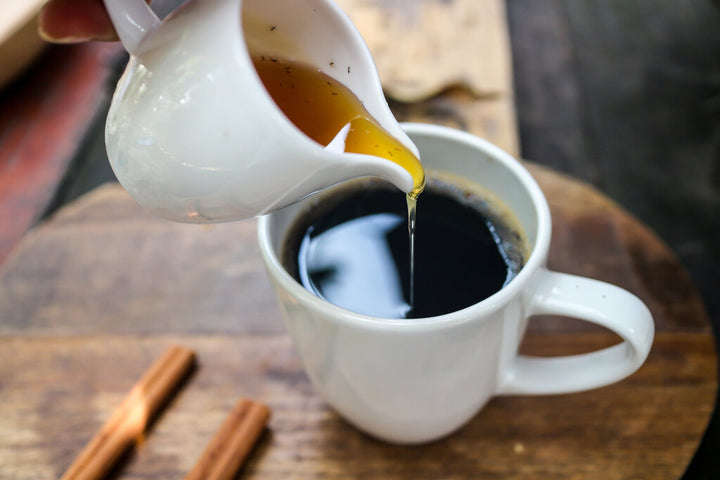Braising Meat: The Ultimate Guide

Braising meat is the ultimate way to cook tender, fall-off-your-fork, slow-cooked meat. It's an essential combination cooking method that involves applying both dry heat and wet heat to slow cook large, tough cuts of meat to perfection.
You can braise meats such as beef, turkey, duck, and lamb. But, don't stop there! Get creative and braise those tough veggies! With this classic cooking technique, you'll first fry your meat (or vegetables) before tenderizing it by slowly cooking it in a broth or stew.
We love using our cast iron dutch oven for braised meat recipes because it seriously allows you to slow cook your favorite chuck roast with an excellent braising all in one pot.
Keep reading for our ultimate guide to braising meat!
What is braising, and how can I do it?
Braising food is a traditional cooking method involving two individual cooking stages.
Any braising definition will explain how food (usually meat) is first fried or sauteed before then being slow-cooked in some form of liquid. During the first stage, dry heat is applied with high-temperature heat, whereas in the second stage, wet heat is applied involving low-temperature heat.
First, fry your meat in a skillet to brown and crisp the outside. Then, slow cook it in a Dutch oven or a casserole dish to really tenderize the meat. During the slow cooking stage, the meat is soaking up and absorbing the broth's flavors you're cooking it in. For the slow-cooking part of the technique, create a hearty broth or gravy that will form a tasty base to complement the meat itself.
The process of braising is an essential component of many delectable dishes, including beef bourguignon, braised pot roasts, and Chinese-style braised pork belly. Let's take a look at a more detailed, step by step method of braising beef, so we can really understand how to braise meat.
What is braised beef?
Of all the meats you can braise, it's beef that you'll often find is most commonly used in braising recipes. Beef is ideal for braising, as you can fry it and then slow cook it in its own juices.
Before you start braising, select a sauce or stew that you'll be slow cooking your beef in, as this is how you fully release those flavors.
Here is the step by step method to braising beef:
- Select your cut of beef, and season it appropriately.
- Add a dash of oil to the bottom of your Dutch oven and place it on the stovetop on high heat.
- When the oil is hot and spitting, add your beef to the bottom of the Dutch oven.
- Sear the meat using a high braising temperature until it's browned on all sides.
- Once the meat is browned and crisp, turn off the heat and add in your other ingredients.
- Pour your beef stock or red wine sauce into the Dutch Oven (your base for the slow-cooking element of braising.)
- Bring the liquid base to a boil, then lower the temperature and allow the ingredients to simmer.
- Keep topping up the broth to keep the ingredients slowly cooking in the juices.
- Slow cook until your braising steak is beautifully tender!
Can you braise any meat?
While beef is one of the most popular braising meats, it's not alone. The technique is best applied to tough cuts of meat, as the process tenderizes it to a level that would be impossible if you were only frying or roasting them.
For example, not all cuts of beef are best for braising. Sirloins or other cuts of beef steak don't braise particularly well, as they are already tender. In particular, chuck is the best cut of beef for braising because it's large and quite tough. Braised chuck roast is one of the best-braised dinners you can prepare, in our opinion! Ribs do well, too, as does brisket.
Aside from beef, though, you can achieve excellent results braising duck.
Braise pot roast for the entire family on Sunday afternoon, braise turkey for Thanksgiving, or even braise pork butt for Friday night with friends.
Anything on the bone is always a winner when it comes to braising, and cheaper cuts are often the best for braising, as they contain lots of connective tissue, which is tough by nature. This tough tissue gets broken down by the braising process, producing wonderfully tender results.
Should braising liquid cover the meat?
It's important to note, though, that your braising liquid doesn't need to submerge your meat entirely. You aren't cooking a stew or a soup, and the primary ingredient is still your side of beef.
The broth that you do use should cover the meat's sides, allowing the meat to absorb the moisture and take on the flavors present in the liquid. Remember that as you slow-cook the dish, the liquid will slowly evaporate while also becoming absorbed by the other ingredients. A Dutch oven can help contain more moisture (and flavor,) but you'll also need to keep the liquid topped up.
It's good to keep some extra stock or broth handy, to continue adding to the dish as you slow cook it in the oven or on the stovetop.
Braising vs. stewing: what's the difference?
Of course, this all sounds a lot like stewing, where you often brown the meat before you start simmering it in a liquidy broth for hours. The two techniques are undeniably similar; however, there are a few significant distinctions.
Braising is best used for large cuts of meats, whereas stewing is often reserved for smaller pieces of meat. Stewing also requires you to submerge your meat and vegetables in the broth entirely, creating a thick, almost soup-like consistency, whereas braising requires far less liquid.
Can you braise vegetables?
Braising isn't reserved for tough cuts of meat only, though, and vegetarians can easily get in on the braising action as well. The principle is the same, and tougher vegetables (particularly root vegetables) such as carrots, radishes, or potatoes make for excellent braising.
A selection of braised vegetable ingredients can accompany your braised meat too, with many recipes calling for the veggies to be cooked at the same time as the meat, in the same sauce (a one-pot- braised roast dinner, for example!)
Will you start braising meat?
Learning how to braise meat is an essential kitchen technique and skill that any budding chef needs to master. While the process itself is simple enough to understand (you fry your meat, then slow cook your meat in liquid broth), recipes can quickly become more complicated as you add more ingredients and herbs to the mixture!
We'd suggest starting by learning to braise beef by cooking it in a red wine sauce or a light onion or beef stock. Once you've mastered the process of braising beef, you can move on to more advanced recipes. Let your family enjoy the fruits of your labor!
Why not save our guide to braising meat for your next Sunday dinner?
Leave a comment
Comments will be approved before showing up.
Also in Tips
